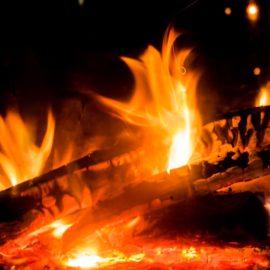
I am walking my dog in the morning leaving around 0600 or so. Why? Because it gets hot during the day. That is about to get worse!
America’s new normal temperature is a degree hotter than it was just two decades ago. Scientists have long talked about climate change – hotter temperatures, changes in rain and snowfall and more extreme weather – being the “new normal.” Data released Tuesday by the National Oceanic and Atmospheric Administration put hard figures on the cliché. The new United States normal is not just hotter but wetter in the eastern and central parts of the country and considerably drier in the West than just a decade earlier.
nola.com
Thirty years of data are used in these calculations, to avoid the yearly up and downs. This is the standard of the World Meteorological Organization. Every ten years a more location specific data check is done. This is the ten year report.
For the entire country, the yearly normal temperature is now 53.3 degrees based on weather station data from 1991 to 2020, almost half a degree warmer than a decade ago. Twenty years ago, normal was 52.3 degrees based on data from 1971 to 2000. The average U.S. temperature for the 20th century was 52 degrees. The new normal annual U.S. temperature is 1.7 degrees hotter than the first normal calculated for 1901 to 1930. “Almost every place in the U.S. has warmed from the 1981 to 2010 normal to the 1991 to 2020 normal,” said Michael Palecki, the agency’s normals project manager. Fargo, North Dakota, where the new normal is a tenth of a degree cooler than the old one, is an exception. More than 90% of the U.S. has warmer normal temperatures now than 10 years ago, Palecki said.
Chicago and Asheville, North Carolina – temperature jumped 1.5 degrees.
Seattle, Atlanta, Boston and Phoenix – temperature up at least 0,5 degrees.
Charlottesville, Virginia, saw the biggest jump in normal temperatures among 739 major weather stations. Other large changes were in California, Texas, Virginia, Indiana, Arizona, Oregon, Arkansas, Maryland, Florida, North Carolina and Alaska. New normals are warmer because the burning of fossil fuels is making the past decade “a much hotter time period for much of the globe than the decades” before, said Cornell University climate scientist Natalie Mahowald.
Phoenix – rain dropped 10%.
Los Angeles – rain dropped 4.6%.
Asheville – 9% rain increase.
New York City – 6% increase in rain.
Seattle – 5% increase in rain.
Climate scientists are split about how useful or misleading newly calculated normals are. Mahowald and meteorology professor Jason Furtado of the University of Oklahoma said updating normal calculations helps city and regional planners prepare for flooding and drought, farmers to decide what and when to plant, energy companies to meet changing demands and doctors to tackle public health issues arising from climate change. But climate scientist Michael Mann of Pennsylvania State University said he prefers a constant baseline such as 1951 to 1980, which is what NASA uses. Adjusting normal every 10 years “perverts the meaning of ‘normal’ and ‘normalizes’ away climate change,” he said. North Carolina’s state climatologist, Kathie Dello, said, “It seems odd to still call them normals because 1991-2020 was anything but normal climate-wise.”
In a sense it doesn’t matter what the projections say as we still have to live, work and play what ever the temperature or rain. We are seeing more rain.



